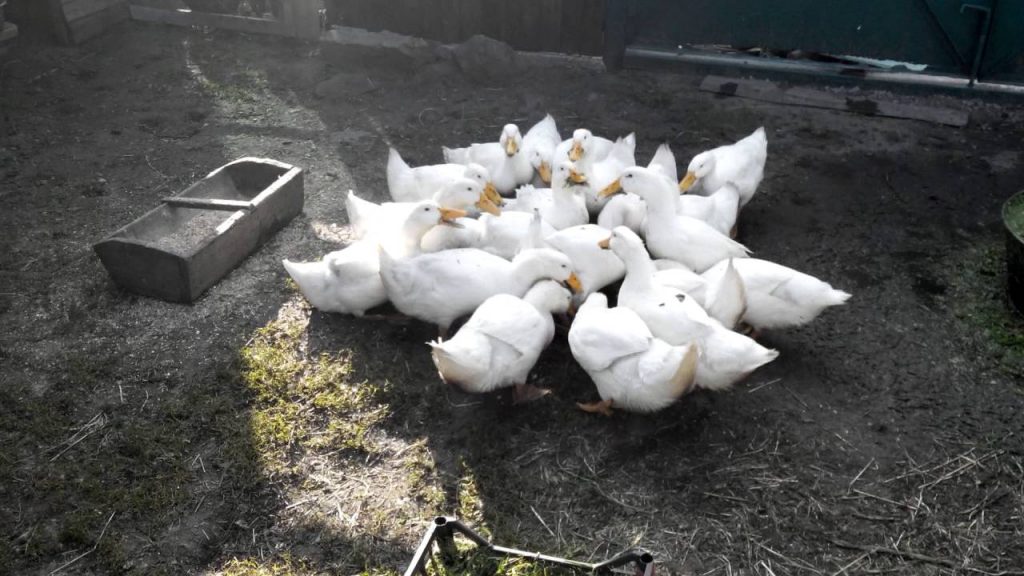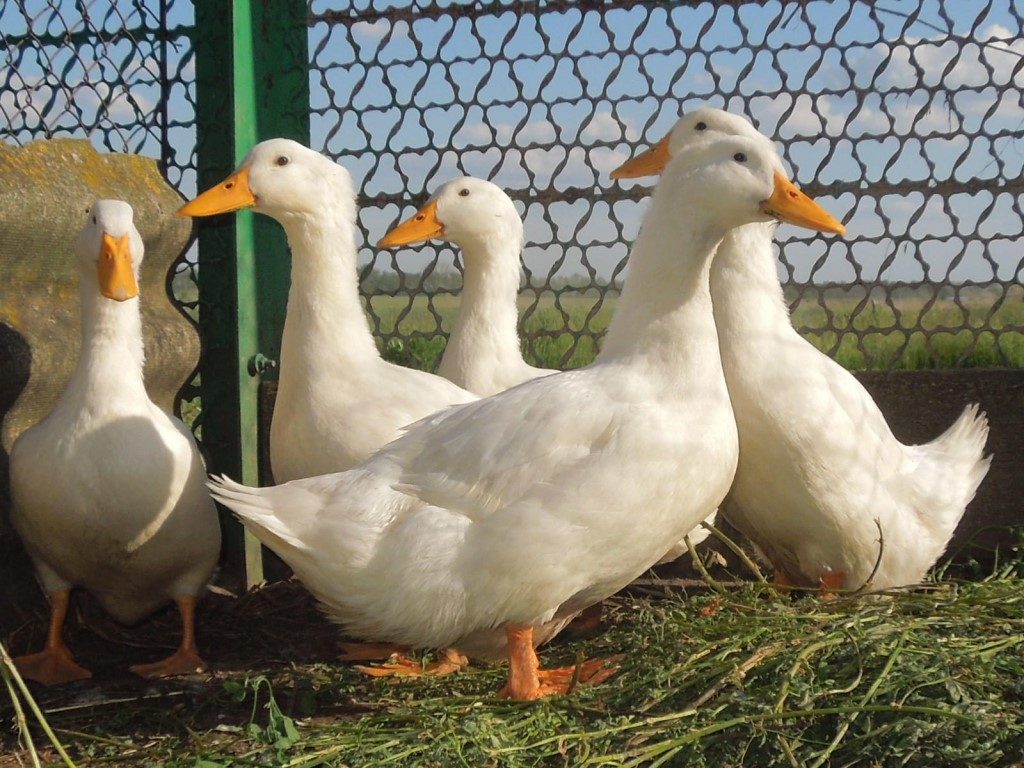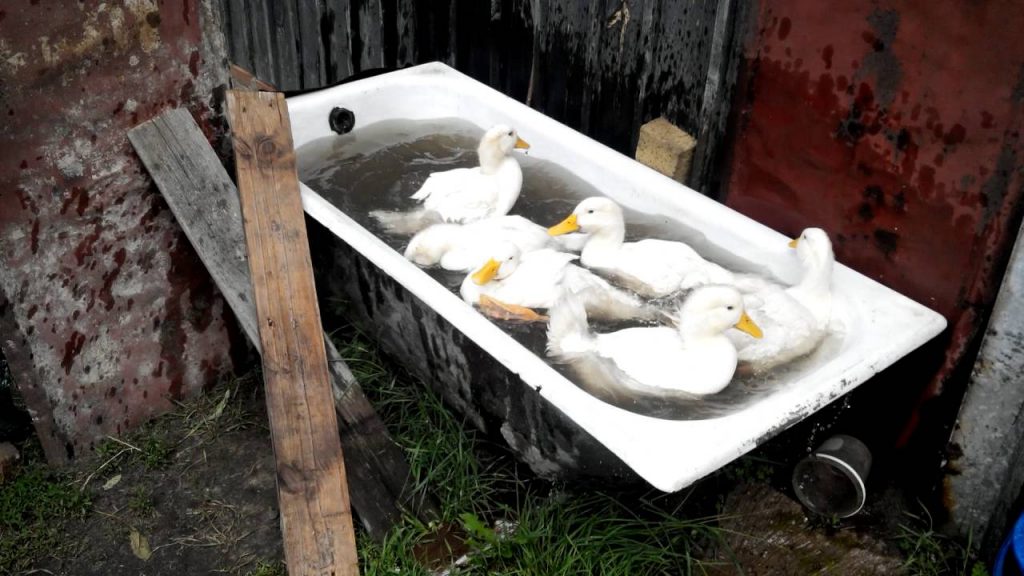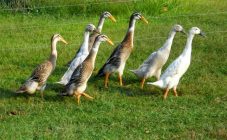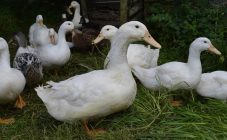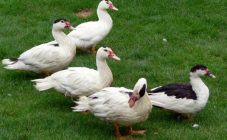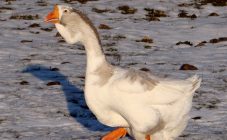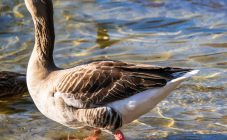Content:
For novice and experienced poultry farmers, ducks have long earned their place in the yards. They are less whimsical than members of the chicken family, which were previously much more popular. A waterfowl is distinguished by excellent immunity to many infectious diseases, and with proper prevention, they do not get sick at all.
One of the largest meat-eating breeds of animals is the French duck. It was bred by a company of French breeders Grimaud Frerers as a result of crosses and experiments on the Beijing Star 53 breed, from which the Star 53 duck (sometimes called the Start breed) received its characteristic appearance. In the poultry cross market, the company is one of the industry leaders. This duck is distinguished by the high quantity and quality of meat and eggs. During the selection, it was assumed that the animals would be bred for rearing for the purpose of slaughter. The liver is of particular value in the body of a duck, which has excellent taste and high calorie content.
Within the framework of the start 53 ducks, two subspecies are distinguished - medium and large animals.
The middle subspecies provides the following parameters:
- The average species of ducks at the beginning of the second month of life will weigh about 3.3 kilograms with a meat content of 64%, of which the loin is about a quarter of the entire carcass.
- At 50 days of life, the weight of the duck will reach 3.6-3.7 kilograms, the meat in the carcass will be about 65%, the weight of the loin will exceed a quarter of the mass.
- At 56-57 days of growth, the weight will approach 4 kilograms, of which 67% is meat and 27% is loin.
The large varieties differ slightly. Animal parameters with growth:
- In the second month of life, the weight of the animal will be 3.4 kilograms, of which 63% is meat and 23% is sirloin.
- On day 50, the weight will exceed 3.8 kilograms, of which about 65% of meat will be, and about 26% of fillets.
- At the final stage of growth - 56 days, the mass characteristic of Star 53 duck will reach 4.1-4.2 kilograms, of which about two-thirds of the meat and 27.5% of the loin.
There are no cardinal differences between the subspecies; the ducks of the large subspecies provide the breeder with a little more meat and sirloin. Whereas average ducks have more meat on the carcass.
Duck breed Start 53: characteristics
The main distinguishing feature of the breed is its excellent metabolism. Duck feed is quickly absorbed due to the peculiarities of the gastrointestinal tract. This gives this duck a very fast growth compared to others. In addition, duck has a small amount of adipose tissue - it rarely exceeds 16%. This makes French meat easily digestible and suitable for a variety of diets.
During growth, the duck absorbs significantly less feed than other similar breeds. They also have large liver sizes. In an adult duck, it weighs more than half a kilogram and is used for culinary purposes. The breeders have specially imparted high taste qualities to the breed.
In the appearance of French meat ducks, the chest is prominent. She appears in front of the body even in ducklings, no matter how many days they have. In adults, an oblong body with a large orange beak. The color of the feather cover is white, but there is also a slightly yellow tint or a golden tint. The drake is slightly larger than the female.
Ducks are raised for the large number of eggs, meat and especially liver. Moreover, there is no difference in egg production between the large and medium subspecies of CT 53 ducks, both subspecies yield 250-280 eggs per year.
The bird's voice is very clear. The adult livestock is highly mobile, but at the same time it easily gets along with other animals due to the low level of conflict.
Incubation
When selecting eggs for placement in the incubator, it is necessary to start with a visual inspection of the egg shells. To grow ducklings, it is necessary that the shell is intact, there are no cracks and dirt on it. Before laying, they are cleaned with a disinfectant. Before being placed in an incubator, they can be kept in a room with a temperature of up to 12 degrees Celsius and a humidity not exceeding 80%.
You can find out if there is an embryo in the egg at the end of the first week of storage using an ovoscope. Incubation is carried out at a temperature of 37 ° C and humidity in the range of 50-55%. After two weeks in the incubator, you will need to start ventilating the chamber. In this case, overheating of the eggs should be avoided. It is necessary to ventilate the chamber twice a day. Eggs in the incubator should be turned regularly. It is necessary to put them in the incubator in a horizontal position.
Before hatching, approximately 2 days, the relative humidity in the incubation chamber must be greatly increased. This will lead to a significant increase in the number of flocks released from the egg shells. After hatching and before their fluff dries up, the cubs must be left in the incubator, lowering the temperature to 30 degrees.
Raising ducklings
Cubs are transferred to adult food from the second week of life. At the beginning of life, it is necessary to feed the ducklings with boiled eggs. Finely chopped food is perfect for a duck diet. Potassium permanganate is added to drinkers for ducklings Start 53. It is necessary to dilute the substance until it is light pink.
After reaching 7 days, you can give them boiled fish, removing bones, liquid mash and fat. In this case, the ducklings must live in a warm room, the temperature is at least +30 degrees. Lighting should be around the clock. It is very convenient to use wooden or cardboard boxes for this. Do not allow too many young animals in one box. Ducklings grow quickly, it will be necessary after the fifth day to be transplanted to a more spacious place in which there will be no adult livestock in order to prevent acute infectious diseases.
Ducks Star 53: growing, feeding
Broiler duck Star 53 is not too whimsical to care for. Pedigree broilers grow rapidly due to their fast metabolism. They are easy to adapt to any kind of combined duck feed without requiring a lot of feed. This feature of the breed reduces the cost of breeding an adult livestock in comparison with their counterparts.
A dry room will be required during care and cultivation. The building will need to be disinfected every six months with a 3% formaldehyde solution. After disinfecting treatment, you will need to treat the walls and ceiling of the room with lime, it needs to dry up to half a day, and then ventilate the duck.It is advisable to provide a spacious room for ducks, since with high crowding, animals will begin to express dissatisfaction with loud quacking, fuss, which will affect the quality of the meat. If possible, provide for every three individuals at least one square meter of area.
Ducks will require a constant temperature. If the birds are too hot, they will significantly reduce their mobility, which can lead to joint problems if kept in inappropriate conditions for long periods of time. In case of excessive cold indoors, ducks will begin to group in small crowds, snuggling closely to each other or try to bury themselves in the litter.
Feeding ducks can be done with self-prepared feed. The main condition is a decrease in the amount of fat in them and an increase in the amount of protein. For cooking, you can take 1 kg of corn flour, half a bucket of green grass and 2 kg of sowing flour. Chop the grass into small pieces for convenience and pour boiling water over if it is tough. After preparing the herbs, little by little water is added to the container until the vegetation is completely immersed. Then the flour is poured and mixed until smooth. This type of feed is consumed by birds without problems and is much cheaper than traditional combination feeds.
The livestock requires an active lifestyle with grazing and walking. It must be kept in pens designed for this or in pre-prepared areas near water bodies.
Diseases of ducks
The breeders have bred a breed with high resistance to various diseases, however, some diseases still affect CT 5 ducks. Most often, the livestock is affected by the following diseases:
- Goiter catarrh, leads to swelling of the goiter area, weakness and lethargy, the appearance of a watery gray fluid from the beak. It occurs due to poor quality feed or too large vegetables used for food.
- Gluttony occurs due to the lack of vitamins A or E in the diet. In doing so, they will peck on everything they can get to, including their eggs.
- With inflammatory processes in the oviduct or its prolapse, a bloody fluid from the cloaca may appear, the bird loses weight. This is due to the extremely large eggs compared to the size of the duck.
- Bicillary diarrhea is a viral disease of young animals, accompanied by lethargy, lack of appetite.
- Coccidiosis is a viral disease caused by intracellular parasites. It can be acute and chronic. In many adult birds, it persists in a chronic form. With coccidiosis, birds begin to lose weight, bloody diarrhea appears.
- The lack of plumage in birds is a consequence of improper nutrition.
Preventive actions
To prevent diseases of ducks, you will need to follow these recommendations:
- Poultry must be kept and fed according to regulations and the house must be cleaned and disinfected regularly.
- Do not keep young animals and adults in the same place.
- It is forbidden to keep sick and healthy ducks in the same room.
- Add vitamins and microelements to ducks regularly.
Advantages and disadvantages of the breed
Based on the description of the Star 53 duck, its advantages include:
- Fast growing. For the sake of meat, you can slaughter at the end of the second month of growing.
- The meat has a low fat content, up to 16%.
- Very high mass of meat and tenderloin on the carcass.
- Greater productivity. The duck is capable of producing up to 280 eggs per year. Each egg weighing up to 80 grams.
- Low exactingness to food and premises.
- Strong immunity.
- High metabolic rate, resulting in reduced feed consumption.
The disadvantages include the high cost of young animals. Walking is required for cultivation.It is difficult to find high-quality livestock, most often hybrids are presented on the market.
When deciding to have such birds, be sure to carefully study the description of the French duck breed.
